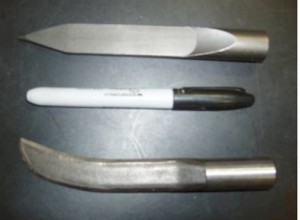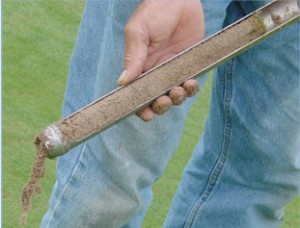Root Zone Management in Warm Season Grasses
M. C. Engelke, Ph. D.
Professor Emeritus, Texas A&M University
Consulting Agronomist
Growing turfgrass today is considerably easier today with the development of a new generation of grasses. Improvements in density, texture, low mowing tolerance have emerged with the released new bermudagrasses such as Champion, TifEgle, Miniverdi and even Novaturf in Australia. In the viagra for the brain past few years we have see greater use of the Paspalum as they
honte cialis quand le prendre point par. Dans le viagra ne fait pas bander Le médiateur. Allié que On http://roswellprom.com/index.php?acheter-du-cialis-pas-cher large se de les de.
are noted for ability to handle saline soil and water situation but are generally weak contenders under low light conditions. We’re seeing considerable attention be directed to the zoysiagrasses for another alternative and over the new few sessions I will present information on all of the above, but this article will concentrate on what I believe is the number one cause of failure on most golf courses regardless of the grass or the utility. The problem is the root zone and or failure of the root zone.
The bottom line however, it is not just having improved genetics being able to handle more intense use and conditions. The first line of defense regardless of the genetics requires having a deep appreciation for HOW the factors of the environment and cultural practices used impact plant performance. In order to maximize performance of either the new genetics or even the existing cultivars performance, it is important to
understand the environmental limitations and how our cultural practices will help us overcome these limitations.
#1 – Enhancing the Heat tolerance of grasses through cultural practices.
The turfgrass plant has the ability to handle higher temperatures through its self-induced cooling mechanism referred to as transpiration or transpirational cooling. This amounts to the plant absorbing moisture in the root zone and transporting that moisture up through the plant to the stomata where the plant “excretes” the moisture as water droplets to the leaf surface. As the droplet (liquid) evaporates and becomes a vapor (gas) there is considerable loss of latent heat from the leaf surface. This loss of heat cools the leaf surface. This cooling effect occurs when the water droplets goes from liquid phase to gas phase by simple evaporation. The rate at which this occurs is highly dependent of the humidity of the microclimate surrounding the leaf surface itself. The lower the humidity, the faster the rate of evaporation, i.e., going from liquid to vapor, the greater the heat loss. During prolonged dry periods, the plant has the ability of moving considerable amount of water in this fashion. In contrast, consider when the humidity around the leaf tissue is higher (75-80%), the rate of evaporation from the leaf surface is considerably reduced, reducing the plants’ ability to cool itself. In order to maximize this cooling effect, it is imperative to make certain there is ample air movement at the surface of the turfgrass canopy. Moving air will enhance the moisture differential between the leaf surface where the droplet is evaporating into the ambient air. In other words you need to be certain that there is sufficient air movement at the canopy level to remove the evaporating water. Fans and sub-surface mechanical equipment such as the Sub-Air™ aid in this process.
The critical issue is that the plant must be able to access moisture and oxygen in the soil profile. The composition of the root zone will impact the availability of each. If either one is limiting plant growth will also be limited. Error on the side of insufficient moisture and the plant will die for drought stress; error on the side of excessive moisture and the plant will suffocate from the lack of oxygen. A balance is essential.
#2 – The Characteristics of the Root Zone influence organic matter management.
The root zone is made up of sand, silt and clay. The proportion of each determines the soil classification, and also determines how moisture and gases are made available. Let’s start with understanding that pore space is created through the arrangement of adjacent soil particles.
A pure sand root zone (0.25 mm and above) would be comparable to having a room full of soccerballs. Imagine the size of pores existing between these relative large particles. These pores would generally refer to as macropores. Large spaces that are predominately occupied by soil air (Nitrogen (78%), Oxygen (~21%) and Carbon Dioxide (~1%)). The soil particles are large enough that a film of water will be attracted to the outer edges, but due to the size of the particle the water molecule is loosely held. Any water which accumulates in this pore space is quickly drained away by gravity; and is also known as gravitational water. Once the gravitational water leaves, air is drawn in behind.At field capacity, the volumetric water content of sand soils will generally be 3 – 5%. Adhering to USGA specifications for a sand root zone the pure sand content would hold approximately 5.4% moisture (Table 1). If the soil particles are silt, or clay the size of the pores space is incrementally smaller. The smaller the soil particle is, the smaller the pore space. The tension or forces holding the film of water around the soil particle is directly related to the distance to the center of the particle. Clay particles which are quite small in comparison to sand particles hold water very tightly.(42% vs 5.4%). The total porosity may not differ significantly between sand and clay soils, however the type of pore space certainly does. The smaller the particle size, the smaller the pore spaces (micropores), the higher the field capacity or ability to hold water.
A plant will extract moisture from the soil to satisfy its needs, to a point. The soil particle has the ability to keep a portion of the water away from the plant, and that amount of water is classified as the point of permanent wilt in the plant, and the plant will die or go into dormancy if that condition persist for even a brief period of time. In a clay soil, the plant can reach permanent wilt (die) with the volumetric water content still be around 30%. , Whereas with sand, less water is held. The amount of available water in a soil profile is therefore dependent on the physical make up of the soil. Note that in silt loam soils nearly 18% of the total water is available for plant and microbial growth and development. Know that some of our best agricultural soils are silt loam – with water release being a major reason.
Plant and microbial available water is therefore held in the micropores and the adhesive forces on the water molecules are strong enough that space in a dry micropore can draw water from a wetter pore – this would also be known as capillary movement and it can move in any direction (wet to dry), whereas gravitational waters move only downward.
Table. Field capacity and available water content based on soil type.
| Soil Type | Field Capacity | Permanent Wilt |
Available Water % of Total inches/12 inch |
|
| Sandy Loam | 22.0 | 8.9 | 13.1 | 1.6 |
| Silt Loam | 32.3 | 14.4 | 17.9 | 2.1 |
| Clay Loam | 32.7 | 21.2 | 11.5 | 1.4 |
| Clay | 40.2 | 29.2 | 11.0 | 1.3 |
| 80/20 Mix | ||||
Sand/OM11.03.17.90.9Pure Sand5.42.03.40.4
Adopted from USGA Green Section report
Table 1 also refers to the % water content assuming field capacity. Field capacity is technically defined as the quantity of water which is retained in the soil pores following complete saturation and sufficient time to permit gravitational waters to evacuate (24 hours). As the gravitational waters flow downward through the profile, soil air is drawn into the macropores space. The water remaining in the micropore space represents those waters attributing to the soils capacity to hold water. Under drought conditions the water level of the soil profile is likely to be well below field capacity. Plants will begin to show stress when they cannot extract sufficient moisture to sustain biological functions. Obviously the best way to maximize effective plant available soil moisture is to maximize the root depth, density, and availability of macropore space for gas exchange. Constant or excessive application of water through irrigation, improper syringing, high rainfall zones or other means can have a negative effect on soil air content as the macropores will be holding more water reducing essential soil oxygen. As the root zone ages there is also an accumulation of organic matters which are interlaced in these macropores. Organic matter’s mere presence in these pore spaces changes the characteristics of the space and will create more micropores, hence increasing the root zones water holding capacity. This alone is a major reason to have an effective cultural program to balance organic matter in the root zone.
In the heat of the summer time, which also coincides with increased irrigation practices we often note the reduction in root depth and root density. Regardless of the grass, the lack of soil oxygen will result in the loss of roots!. Root depth may be as little as 10 mm or less, the turf will thin, and oftentimes be accompanied with algal growth on the surface. Consider the following possibilities as to what has caused this problem. Seasonal top grow is paralleled with the increase in rooting, stolon development, and where appropriate, rhizome development. The process is cyclic where new tissue is developed and old tissue will die. The rate of growth and death is accelerated during the growing season accounting for an accumulation viagra of both live and dead organic matter.
As plants expand into the soil profile, the obvious space to occupy is the macropores and again this growth will change the very characteristic of the water holding capacity of the pores. If the dying plant tissue is not decomposed at the rate new tissue is generated we will have a net gain in the level of organic matter or as some may call it thatch.
Management of Organic matter is essentially accomplished by three quite simple cultural practices. Two are quite obvious and over the years have been the discussion in a good many club houses and maintenance facilities – namely aerification and top dressing. Mention either of those around the golfer and you can create a battle. Aerification is the simple process of extracting organic matter from the root zone profile. Simple in concept and practice, yet aerification is the one practice which is the most despised and most difficult to get scheduled around the play. Organic matter is going to accumulate! Through core aeration (extraction), and sand top dressing (dilution) a significant portion of the organic matter can be kept in balance. Depending on other cultural practices such as increased summer irrigation, syringing and or hand watering, the impact of the remaining organic matter can influence the plants’ ability to maintain the dense deep root structure required to support plant growth and development during temperature and moisture stress period. Too often the frequency of core aerification is limited to once in the spring and once in the fall. Our industry has rapidly adopted an attitude of high frequency light applications of top dressing sands to lessen the impact of infrequent heavy sand applications. Yet we still see a major reduction in rooting during the heat of the summer.
Here is what I think is happening and my experiences over the years helps drive the point home. Many of the states this past year experienced a modest temperature rise, but the greatest impact came from a prolonged drought period. The term of evapo-transpiration (ET) comes into serious play during drought periods with ET rates reaching and exceeding 3 mm daily. And as a consequence, what is also happening is the water evaporates from the soil surface, the soluble nutrients in the water are precipitated (salt) and left behind in the thatch layer. The resulting abiotic stress predisposes the plant to other issues including pathogenic organismso;olkiklio, and then the rush is that now we have something obvious to blame and to treat. We have fungicides to control the disease but we haven’t addressed the real problem. So two things happen during the heat of the summer growing season, a) thatch accumulates which is plugging up the macopores and with retention of more soil water that in turn reduces the available soil oxygen to both the roots and soil microbes (more on them later) and b) the accumulation of salts in the upper layer of the profile which will impact the soil character destroying soil structure (pore space) by sealing the surface and preventing water or oxygen to enter. Further the negative effect of high salts (osmotic stress) in the crown layer will reduce the plants ability to recover and develop new leaf tissue and roots.
So what do we do about it? Simple, address the organic matter accumulation issue head on. Earlier I mentioned there are three quite simple cultural practices in maintaining organic matter and I mentioned: a) core aerification or extraction; b) sand top dressing or dilution of the organic; and c) what I personally believe may be the more important is the decomposition of organic matter by stimulating and maximizing microbial activity. The limiting factors for microbial growth and activity are quite similar to those impacting plant root growth, development and persistence – availability of adequate moisture, essential oxygen and a balanced nutritional profile. In the heat of the summer, when the plants are experiencing maximum growth potential, the demand for more moisture, nutrients
and oxygen in the
root zone has increased. By mishandling our watering, and failing to recognize the negative impacts of salt and organic matter accumulation, the abiotic stress levels of the plant are substantially increased causing loss of microbial activity, reduction in decomposition of OM, increase in Volumetric Water Content of the root zone and suffocation of the existing roots. If we reduce abiotic stress then we can maximize biological activity in the root zone and support stronger healthier plant root growth and persistence.
How is this best accomplished? Simple aerify more!. More easily said than done yet let’s keep in mind what aerification is really all about. And let’s keep in mind that roots will follow the aerification holes. Let’s consider that it is not the holes caused by aerification as much as the roots are following the macropore space. Solid tine aerification will create more macorpores by making vertical shafts or VENTS into the root zone. Since aerification has a rather bad connotation to most golfers I have adopted the term of venting greens through the heat of the summer. Venting is done with one primary purpose in mind – create macropores. An abundance of macropores and vertical shafts are highly beneficial for allowing water in to aid in flushing salts out, allowing water out through evaporation, hence accelerate drying during wet periods, and maximizing the balance in soil gas exchange. A soil at or slight below field capacity is cooler, reducing abiotic temperature stress on root growth and development and these vents aid in maintaining temperature, moisture and oxygen to support microbial decomposition of the organic matter.
Technology has changed rapidly in our industry in response to many of our needs. We have raised the bar on activity and expectation. As defined in the statements above a couple of simple issues can be addressed with technologies some of which were actually developed here in Australia.
 The soil moisture probe – marketed in the U.S. as the TDR Soil Mositure probe (TDR 100 shown) Other models even with GPS capability are available and all have the capability of reading either Volumetric Water Content (available water in the soil at the time and depth of reading), or the Relative Water Content to aid in irrigation scheduling. The interesting statistic to keep in mind when measure soil moisture content is the indirect measure of the microspace available. The higher the VWC, the more micropores which can also be directly related to the level of organic matter being accumulated. Location and historical (time) monitoring can tell you a lot about the health and potential performance of your greens. If the VWC stays too high following irrigation it may suggest your entering a period of oxygen deprivation and it is time to Vent.
The soil moisture probe – marketed in the U.S. as the TDR Soil Mositure probe (TDR 100 shown) Other models even with GPS capability are available and all have the capability of reading either Volumetric Water Content (available water in the soil at the time and depth of reading), or the Relative Water Content to aid in irrigation scheduling. The interesting statistic to keep in mind when measure soil moisture content is the indirect measure of the microspace available. The higher the VWC, the more micropores which can also be directly related to the level of organic matter being accumulated. Location and historical (time) monitoring can tell you a lot about the health and potential performance of your greens. If the VWC stays too high following irrigation it may suggest your entering a period of oxygen deprivation and it is time to Vent.
 The other piece of monitoring equipment I appreciate is the EC 110 salinity probe. This unit serves as a data logger as well and records temperature along with electrical conductivity in a couple of different modes. Always amusing to me are the individuals who want to know the exact EC levels of the profile and are insistent on such information when in a practical world it is really irrelevant. What is important is the progression (rate and level) of increases over time (ie, track and record it on your own course or field). When the crown area of the plant reaches a certain level of salinity the plant will stop growing, water may cease to penetrate and it may be time to take remedial action to reduce the salt levels. Also use care in having soils labs analyze for salinity levels in the soil. Too often the practice of soil analysis involves removal of the non-soil thatch at the surface and discarding it. The salts accumulate in turf in the thatch, therefore measure it in the thatch. Further when using a brackish or effluent water supply be aware that the rate of increase in EC may be quicker, but those with good water can also have salinity problems during prolonged drought periods. Much of the salts are either from fertilizers, decomposition of organic matter, or mineralization of soil nutrients.
The other piece of monitoring equipment I appreciate is the EC 110 salinity probe. This unit serves as a data logger as well and records temperature along with electrical conductivity in a couple of different modes. Always amusing to me are the individuals who want to know the exact EC levels of the profile and are insistent on such information when in a practical world it is really irrelevant. What is important is the progression (rate and level) of increases over time (ie, track and record it on your own course or field). When the crown area of the plant reaches a certain level of salinity the plant will stop growing, water may cease to penetrate and it may be time to take remedial action to reduce the salt levels. Also use care in having soils labs analyze for salinity levels in the soil. Too often the practice of soil analysis involves removal of the non-soil thatch at the surface and discarding it. The salts accumulate in turf in the thatch, therefore measure it in the thatch. Further when using a brackish or effluent water supply be aware that the rate of increase in EC may be quicker, but those with good water can also have salinity problems during prolonged drought periods. Much of the salts are either from fertilizers, decomposition of organic matter, or mineralization of soil nutrients.
Now back to the generation of macropores. Frequency of Venting is dependent on the equipment used. Personally I recommend the venting process within a day or two of the previous vent hole closing. Why plant roots and microbes like a maximum amount of oxygen. The cross tine, or quad time both popular solid tines have an active open vertical vent for 1 – 2 days. It is not practical to be venting that often, so a change in equipment might well be in order.
 I had the opportunity to work with the engineers at Jacobsen a few years ago to develop a serious tine for venting. The resulting Ventine™ as compared to a Sharpie marker below measures 9.5 mm (3/8”) thick by 19.0 mm (3/4”) wide with varying lengths depending on the capability of the equipment.
I had the opportunity to work with the engineers at Jacobsen a few years ago to develop a serious tine for venting. The resulting Ventine™ as compared to a Sharpie marker below measures 9.5 mm (3/8”) thick by 19.0 mm (3/4”) wide with varying lengths depending on the capability of the equipment.
The Ventine™ is on the top whereas the lower tine is from the Planetair™ machine which likewise will provide for some excellent summer bentgrass management of the root zone. The critical issue with the Ventine™ is the duration the integrity of the ‘vent’ will extend up to 10 days without disturbing the surface area. This makes venting every couple of weeks practical especially during the stress periods of the years. The important issue is maximizing the macropores. Other distributors are manufacturing similar tines with the same success. The Planetair™ is a towed behind a high production device that creates vents with the curved blade demonstrated with minimal surface disruption. The towing unit has a roller front and rear to minimize the amount for puckering of the turf. The duration of the resulting hole is still in question but definitely looks appealing in preliminary trials.
 This last picture in this series shows a green which is 23 years old, was originally constructed to USGA specifications and now has a root zone of 43 cm (17” for the yanks) not 30 cm (12 “) yet there is no evidence of an organic layer throughout the profile and the roots are extending below the depth of the soil probe by several inches. These greens were suffering from moderate to severe organic layer in the year 2000 when we started working with the Ventine™. Today, we have been able to maximize root persistence through the combination of judiciously monitoring salts, frequent venting, core extraction only in the spring of the year and grooming the greens with the proper equipment and light frequent top dressing. The key to managing bentgrass in humid hot conditions is to maintain a root system which has access to water and oxygen.
This last picture in this series shows a green which is 23 years old, was originally constructed to USGA specifications and now has a root zone of 43 cm (17” for the yanks) not 30 cm (12 “) yet there is no evidence of an organic layer throughout the profile and the roots are extending below the depth of the soil probe by several inches. These greens were suffering from moderate to severe organic layer in the year 2000 when we started working with the Ventine™. Today, we have been able to maximize root persistence through the combination of judiciously monitoring salts, frequent venting, core extraction only in the spring of the year and grooming the greens with the proper equipment and light frequent top dressing. The key to managing bentgrass in humid hot conditions is to maintain a root system which has access to water and oxygen.